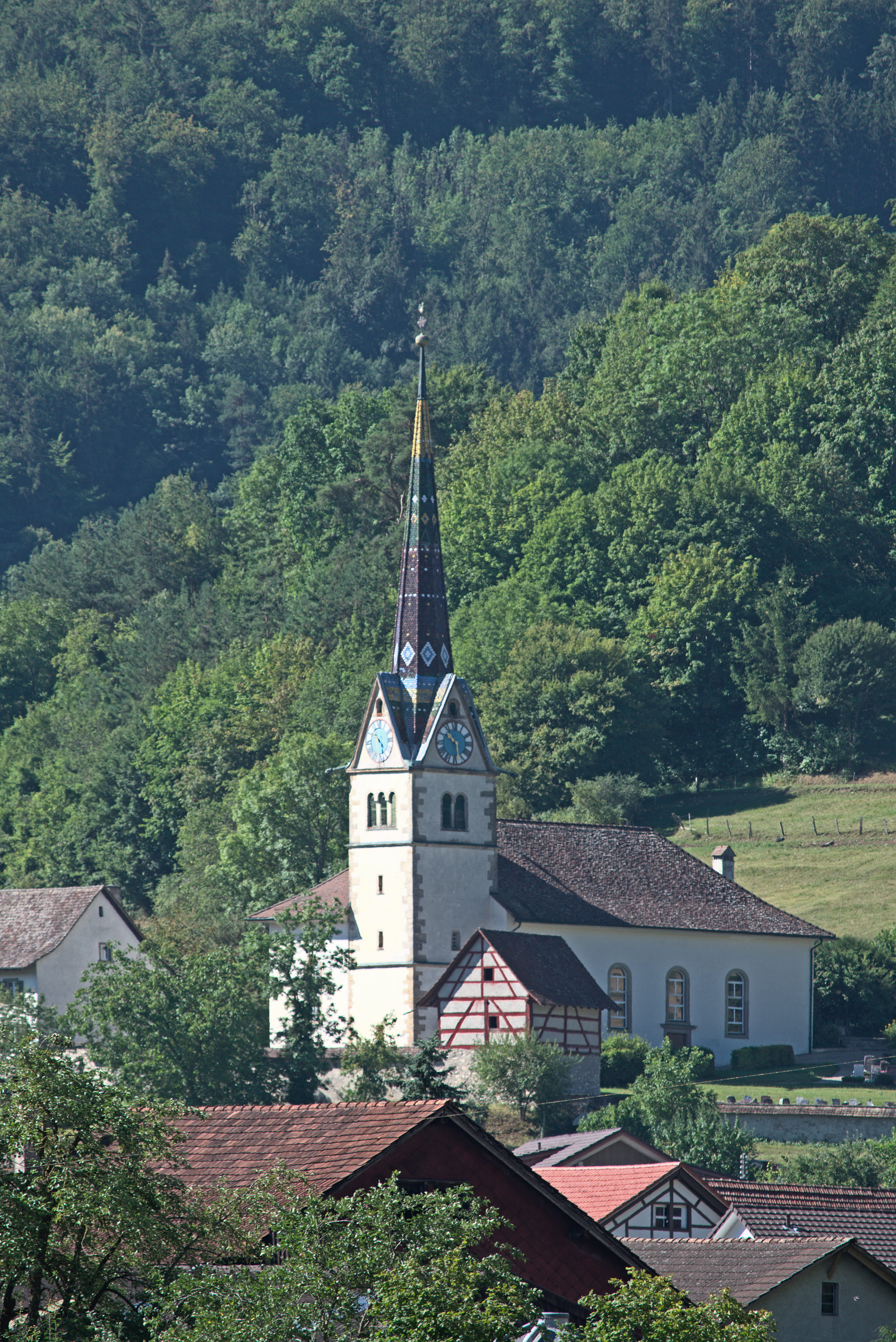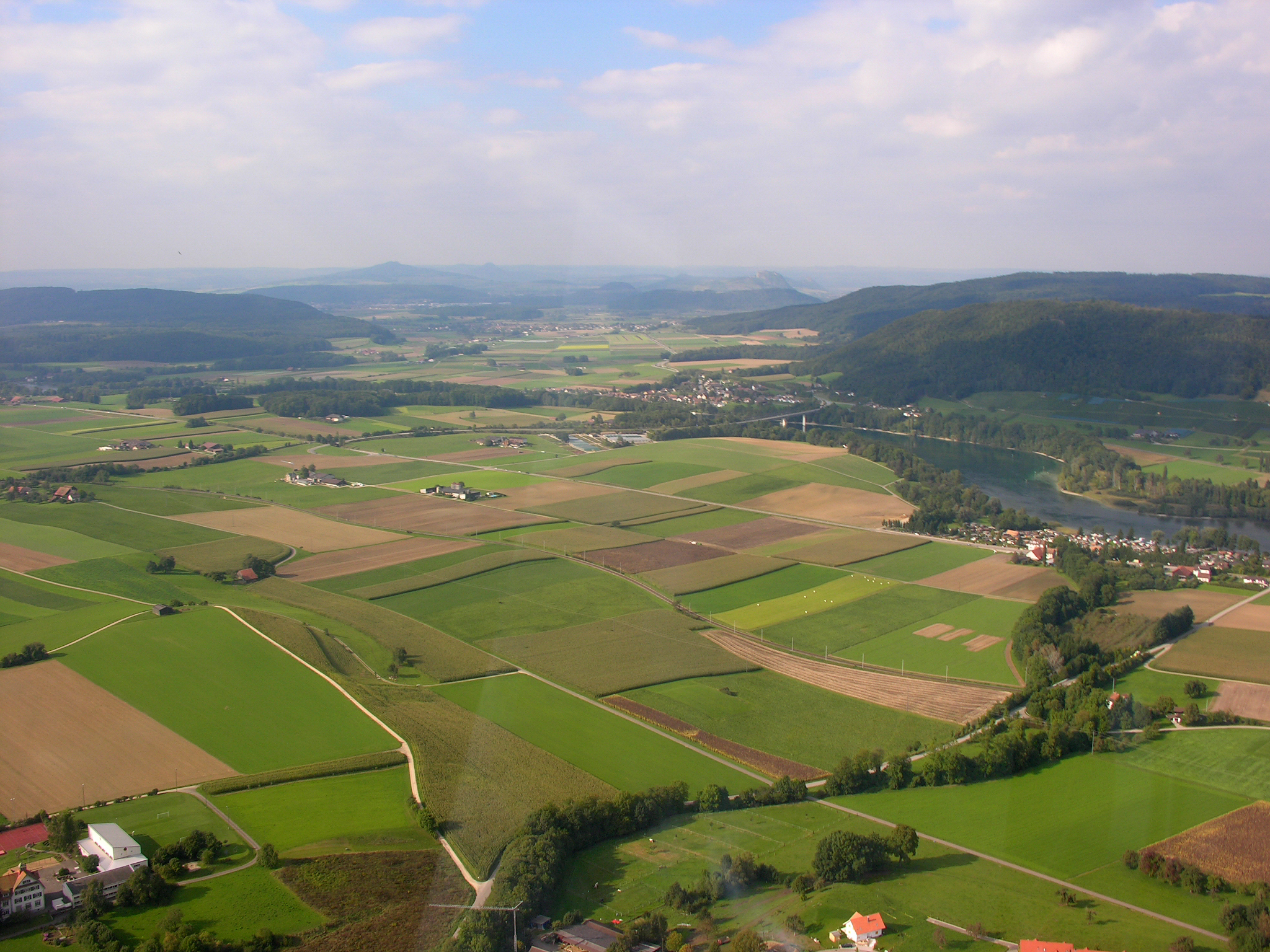|
Büttenhardt
Büttenhardt (pronunciation: ˈbʏttənˌhaɐt) is a municipality in the canton of Schaffhausen in Switzerland. History Büttenhardt is first mentioned in 1238 as ''Butinhart''. The village became part of Switzerland in the 14th century. The territory of the municipality of Büttenhardt today includes territory of Verenahof which formerly belonged to what was then West Germany. Verenahof (also known as ''Büttenharter Hof'' or ''Verenahöfe'') was a German exclave in Switzerland, administratively part of the West German town of Wiechs am Randen (which is now part of the town of Tengen). Geographically, it was separated from the rest of West Germany by a 200–300-metre wide strip of Swiss territory. In 1964 a treaty was concluded between West Germany and Switzerland, which entered into force on 4 October 1967. The 43-hectare territory, containing three houses and fewer than a dozen people, became part of Switzerland [...More Info...] [...Related Items...] OR: [Wikipedia] [Google] [Baidu] |
Lohn, Schaffhausen
Lohn is a municipality in the canton of Schaffhausen in Switzerland. History Lohn is first mentioned in 1238 as ''Lône''. Coat of arms The blazon of the municipal coat of arms is ''Gules a Ploughshare Argent.'' Geography Lohn has an area, , of . Of this area, 56.6% is used for agricultural purposes, while 35.7% is forested. Of the rest of the land, 7.4% is settled (buildings or roads) and the remainder (0.4%) is non-productive (rivers or lakes). The municipality is located in the Reiat district. It consists of the ''haufendorf'' village (an irregular, unplanned and quite closely packed village, built around a central square) of Lohn on a plateau of the Reiat hills. Demographics Lohn has a population () of 765, of which 4.8% are foreign nationals. Of the foreign population, (), 71.9% are from Germany, 9.4% are from Italy, 3.1% are from Croatia, and 15.6% are from another country. [...More Info...] [...Related Items...] OR: [Wikipedia] [Google] [Baidu] |
Verenahof
Verenahof (also known as ''Büttenharter Hof'' or ''Verenahöfe''), nowadays part of the Swiss town of Büttenhardt, was a German exclave in Switzerland, administratively part of the German town of Wiechs am Randen (which is now part of the town of Tengen). Geographically, it was separated from Wiechs am Randen by a wide strip of Swiss territory. It was absorbed into Switzerland in 1967 after diplomatic negotiations between Federal Republic of Germany and Switzerland. History In 1522, Emperor Charles V and his brother, Archduke Ferdinand of Austria purchased Verenahof along with other territories in the vicinity (Tengen, Kommingen, Wiechs am Randen) from Count , who expressly wished not to sell these possessions to the Swiss Canton of Schaffhausen. In the 17th and 18th centuries there were repeated disputes between Tengen and the adjacent Schaffhausen over the access roads and the exact delimitation of the enclave. Residents of Verenahof were Catholic at that time whereas t ... [...More Info...] [...Related Items...] OR: [Wikipedia] [Google] [Baidu] |
Opfertshofen
Opfertshofen was a municipality in the canton of Schaffhausen in the north of Switzerland. On 1 January 2009 Opfershofen merged with Altdorf, Bibern, Hofen, and Thayngen Thayngen () is a village and a municipality in the canton of Schaffhausen in Switzerland. On 1 January 2009 Altdorf, Bibern, Hofen, Opfertshofen merged into Thayngen.Amtliches Gemeindeverzeichnis der Schweiz published by the Swiss Federal Statistical Office accessed 23 September 2009 References [...More Info...] [...Related Items...] OR: [Wikipedia] [Google] [Baidu] |
Schaffhausen
Schaffhausen (; gsw, Schafuuse; french: Schaffhouse; it, Sciaffusa; rm, Schaffusa; en, Shaffhouse) is a list of towns in Switzerland, town with historic roots, a municipalities of Switzerland, municipality in northern Switzerland, and the capital of the canton of Schaffhausen, canton of the same name; it has an estimated population of 36,000 It is located right next to the shore of the High Rhine; it is one of four Swiss towns located on the northern side of the Rhine, along with , the historic , and . The old town has many fine Renaissance era buildings decorated with exterior frescos and sculpture, as well as the old canton fortress, the ''Munot''. Schaffhausen is also a railway junction of Swiss and German rail networks. One of the lines connects the town with the nearby Rhine Falls in , Europe's largest waterfall, a tourist attraction. The official language of Schaffhausen is (the Swiss variety of Standard) Swiss Standard German, German, but the main spoken language ... [...More Info...] [...Related Items...] OR: [Wikipedia] [Google] [Baidu] |
Stetten, Schaffhausen
Stetten is a municipality in the canton of Schaffhausen in Switzerland. Geography Stetten has an area, , of . Of this area, 45.6% is used for agricultural purposes, while 44.9% is forested. Of the rest of the land, 9.3% is settled (buildings or roads) and the remainder (0.2%) is non-productive (rivers or lakes). Coat of arms The blazon of the municipal coat of arms is ''Gules Moon increscent Or.'' Demographics Stetten has a population () of 1,084, of which 16.7% are foreign nationals. Of the foreign population, (), 47.3% are from Germany, 10.2% are from Italy, 2.7% are from Serbia, 0.5% are from Macedonia, 0.5% are from Turkey, and 38.7% are from another country.Statistical Office of the Canton of Schaffhausen accessed 2 December 2009 Over the last 10 years the population has grown at a rate o ... [...More Info...] [...Related Items...] OR: [Wikipedia] [Google] [Baidu] |
Merishausen
Merishausen is a municipality in the canton of Schaffhausen in Switzerland. History Merishausen is first mentioned in 846 as ''Morinishusun''. Coat of arms The blazon of the municipal coat of arms is ''Azure a Mullet Or.'' Geography Merishausen has an area, , of . Of this area, 30.3% is used for agricultural purposes, while 65.6% is forested. Of the rest of the land, 3.9% is settled (buildings or roads) and the remainder (0.2%) is non-productive (rivers or lakes). The municipality is located in the Schaffhausen district on the German border. It is located on the Durach river along an important trade route between southern Germany and Switzerland. Demographics Merishausen has a population () of 779, of which 10.0% are foreign nationals. Of the foreign population, (), 50% are from Germany, 10.9% are from Italy, and 39.1% are from another country. [...More Info...] [...Related Items...] OR: [Wikipedia] [Google] [Baidu] |
Schaffhausen (canton)
The canton of Schaffhausen, also canton of Schaffouse (german: Kanton Schaffhausen; rm, Chantun Schaffusa; french: Canton de Schaffhouse; it, Canton Sciaffusa) is the northernmost canton of Switzerland. The principal city and capital of the canton is Schaffhausen. The canton's territory is divided into three non-contiguous segments, where German territory reaches the Rhine. The large central part, which includes the capital, in turn separates the German exclave of Büsingen am Hochrhein from the rest of Germany. History Schaffhausen was a city-state in the Middle Ages; it is documented that it struck its own coins starting in 1045. It was then documented as ''Villa Scafhusun''. Around 1049, Count Eberhard von Nellenburg founded a Benedictine monastery which led to the development of a community. This community achieved independence in 1190. In 1330, the town lost not only all its lands but also its independence to the Habsburgs. In 1415, the Habsburg Duke Frederick IV of A ... [...More Info...] [...Related Items...] OR: [Wikipedia] [Google] [Baidu] |
Weizen
Wheat beer is a top-fermenting, top-fermented beer which is brewing, brewed with a large proportion of wheat relative to the amount of malted barley. The two main varieties are German ''Weizenbier'' and Belgian ''witbier''; other types include Lambic (made with wild yeast), Berliner Weisse (a cloudy, sour beer), and Gose (a sour, salty beer). Varieties Weißbier (German – "white beer") uses at least 50% wheat to barley malt to make a light coloured top-fermenting beer. Witbier (Dutch – "white beer") uses flavorings such as coriander and orange (fruit), orange peel. Belgian white beers are often made with raw unmalted wheat. German Weißbier and Belgian witbier are termed "white beers" because "wheat" has the same Etymology, etymological root as "white" in most West Germanic languages (including English). Other wheat beer styles, such as Berliner Weiße, Gose, and Lambic, are made with a significant proportion of wheat. Weizenbier Weizenbier or Hefeweizen, in the souther ... [...More Info...] [...Related Items...] OR: [Wikipedia] [Google] [Baidu] |
Kreuzlingen
Kreuzlingen is a municipality in the district of Kreuzlingen in the canton of Thurgau in north-eastern Switzerland. It is the seat of the district and is the second-largest city of the canton, after Frauenfeld, with a population of about 22,000. Together with the adjoining city of Konstanz just across the border in Germany, Kreuzlingen is part of the largest conurbation on Lake Constance with a population of almost 120,000. History The name of the municipality stems from the Augustinian monastery ''Crucelin'', later Kreuzlingen Abbey. It was founded in 1125 by the Bishop of Constance Ulrich I. In the Swabian War and the 30 Years' War after the siege of Constance by Swedish troops, the Augustinian monastery was burned down by the people of Constance, who blamed the monks for having supported the enemy. In 1650, the monastery was rebuilt in its present location. With secularization in 1848, the buildings became a teachers' school. The chapel became a Catholic Church. The area ... [...More Info...] [...Related Items...] OR: [Wikipedia] [Google] [Baidu] |
Hemishofen
Hemishofen is a municipality in the canton of Schaffhausen in Switzerland. History The Iron Age grave sites at ''Sankert'' indicate that this area has been settled since 800-600 BC. However, Hemishofen is first mentioned after about 1100 as ''Hammingeshoven''. Coat of arms The blazon of the municipal coat of arms is ''Per pale Or and Gules overall a branch with five leaves Vert issuant from base.'' Geography Hemishofen has an area, , of . Of this area, 35.8% is used for agricultural purposes, while 54.7% is forested. Of the rest of the land, 5.9% is settled (buildings or roads) and the remainder (3.7%) is non-productive (rivers or lakes). The municipality is located in the Stein district. Hemishofen is located along the Rhine River. The village sits at the foot of the Wolkensteinerberg, while the municipality stretches north to Herrentisch. The municipalities of Hemishofen, and Stein am Rhein are considered a merger for some time in the future into a new municipality w ... [...More Info...] [...Related Items...] OR: [Wikipedia] [Google] [Baidu] |







